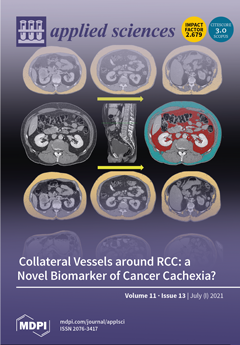Background: Post-prostatectomy incontinence (PPI) is a major complication that can significantly decrease quality of life. Approximately 20% of patients experience consistent PPI as long as 1 year after radical prostatectomy (RP). This study develops a preoperative predictive model and compares its diagnostic performance with conventional tools.
Methods: A total of 166 prostate cancer patients who underwent magnetic resonance imaging (MRI) and RP were evaluated. According to the date of the RP, patients were divided into a development cohort (n = 109) and a test cohort (n = 57). Patients were classified as PPI early-recovery or consistent on the basis of pad usage for incontinence at 3 months after RP. Uni- and multi-variable logistic regression analyses were performed to identify associates of PPI early recovery. Four well-known machine learning algorithms (k-nearest neighbor, decision tree, support-vector machine (SVM), and random forest) and a logistic regression model were used to build prediction models for recovery from PPI using preoperative clinical and imaging data. The performances of the prediction models were assessed internally and externally using sensitivity, specificity, accuracy, and area-under-the-curve values and estimated probabilities and the actual proportion of cases of recovery from PPI within 3 months were compared using a chi-squared test.
Results: Clinical and imaging findings revealed that age (70.1 years old for the PPI early-recovery group vs. 72.8 years old for the PPI consistent group), membranous urethral length (MUL; 15.7 mm for the PPI early-recovery group vs. 13.9 mm for the PPI consistent group), and obturator internal muscle (18.2 mm for the PPI early-recovery group vs. 17.5 mm for the PPI consistent group) were significantly different between the PPI early-recovery and consistent groups (all
p-values < 0.05). Multivariate analysis confirmed that age (odds ratio = 1.07, 95% confidence interval = 1.02–1.14,
p-value = 0.007) and MUL (odds ratio = 0.87, 95% confidence interval = 0.80–0.95,
p-value = 0.002) were significant independent factors for early recovery. The prediction model using machine learning algorithms showed superior diagnostic performance compared with conventional logistic regression (AUC = 0.59 ± 0.07), especially SVM (AUC = 0.65 ± 0.07). Moreover, all models showed good calibration between the estimated probability and actual observed proportion of cases of recovery from PPI within 3 months.
Conclusions: Preoperative clinical data and anatomic features on preoperative MRI can be used to predict early recovery from PPI after RP, and machine learning algorithms provide greater diagnostic accuracy compared with conventional statistical approaches.
Full article





